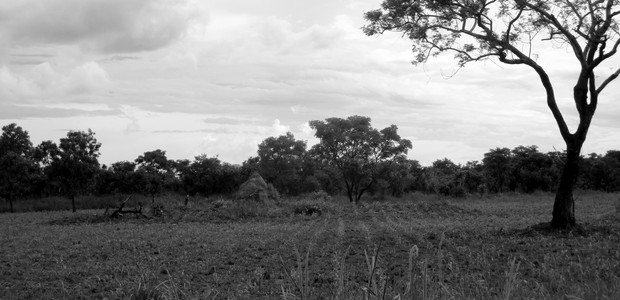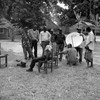Sorghum, maize, rice, red beans and bread

When South Sudan became independent in 2011 an estimated 900,000 people faced food shortages. But fast forward five years and it is estimated that some 5.3 million lack enough food this year, according to the United Nations World Food Programme.
South Sudan faced the most severe lean season in 2016 since its independence, driven by insecurity, poor harvests, and displacement.
“Internal food security analysis shows that South Sudan faced the most severe lean season in 2016 since its independence, driven by insecurity, poor harvests, and displacement in some areas of the country,” according to a WFP report published in May, which specified that the lean season runs from March to September.
Since 2013, the provision of basics has been impeded by conflict and weaker crop production as people flee their lands to escape violence. The 2013 civil war disrupted key transport routes and depressed an already weak economy.
The World Food Programme has warned that if peace does not take hold, many people will become increasingly vulnerable, face food shortages and even famine. Food provision hinges on the faltering progress towards peace. At the beginning of April, food prices ticked lower as the South Sudan pound regained some ground against the U.S. dollar. The black market rate stood at one U.S. dollar to SSP 30 – a significant shift from the past one-and-a-half-month trend of one U.S. dollar to SSP 45.
But the World Food Programme said it expected an increased reliance on costly imported foods for the better part of 2016. Cross border supplies of cereals from Sudan to northern markets is expected to be depressed due to crop failures and low production surpluses anticipated for the 2015/16 harvest period in the Greater Darfur region and West and South Kordofan.
A glance at how South Sudan’s five staple foods fared over the past five years shows why so many citizens, who often earn as little as SSP 60 per day, are worried about where their next meal will come from.
Sorghum
Prices of sorghum, a cereal crop which is a staple in South Sudan, are starting to dip in local currency terms across the country. But prices in Juba, for example, have been sharply inflated by the conflict. The price of white sorghum in Juba is now at SSP 30, more than twice its price-tag in November and December, making it hard for many families to be able to afford to make Kisira, a typical dish.
Beans
Last December, most South Sudanese markets sold red beans, known as janjaro, at an average price of SSP 40 per kilogram, more than double the price of two months earlier. Bean prices were highest in parts of South Sudan facing the most insecurity, which disrupted markets, transportation and farming activities. Prices continued rising in March this year, due to low supply and high transportation costs. Yida and Juba reported the highest prices, which spiked as high as SSP 65 per kilogram.
Rice
Back in 2011 when South Sudan became independent, rice sold for just SSP 5 per kilo and prices stayed at SSP 7 in 2012. The onset of the civil war sparked dramatically inflated prices, pushing them to a peak of SSP 80 per kilo last year. This year prices have eased slightly to SSP 60 per kilogram.
Bread (Eshi)
Shortly after independence, you could buy five loaves of bread, known as Eshi, for just SDG 1. But prices jumped sharply following the outbreak of the civil war, which interfered with agriculture and trade. It is now selling at SSP 5 for a small loaf. Eshi is one of South Sudan’s key foods and small loaves of bread made from wheat are usually served with beans or beef. For a satisfying family meal, one needs 3-4 loafs of Eshi, pushing the meal price to SSP 20, even without the soup.
Maize
In 2015, white maize prices in most markets were around SSP 30, generally double the level of 2014. In 2011 after independence was declared, a malwa of maize sold at SSP 5. This year, prices have eased slightly in many markets, except for Rumbek, where they have spiked to new highs, with white maize costing SSP 51. Non-conflict areas have ample supply of maize flour from Uganda flooding their markets, but they retail at extremely high prices, putting them out of reach for most South Sudanese citizens.






